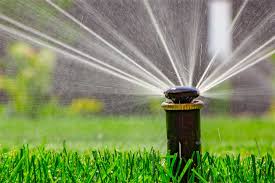A well-maintained lawn is a beautiful addition to any home, but keeping your lawn healthy and green requires different care throughout the year. Here are some tips for lawn care for every season:
Spring Lawn Care
Rake your lawn. Remove any debris, dead leaves, or grass thatch from your lawn. This allows air and sunlight to reach the grassroots and promotes healthy growth.
Aerate your lawn. Aerating your lawn helps improve soil compaction and allows water and nutrients to reach the grassroots. You can rent an aerator or hire a lawn care professional to do it for you.
Fertilize your lawn. Spring is the best time to fertilize your lawn. Choose a fertilizer with a high nitrogen content, which promotes leaf growth.
Apply pre-emergent herbicides. Apply pre-emergent herbicides to prevent weed seeds from germinating. Be sure to follow the instructions carefully, as overuse can damage your lawn.
Water your lawn. Water your lawn deeply and infrequently. This encourages deep root growth and helps your lawn withstand drought conditions.
Summer Lawn Care
Mow your lawn regularly. During the summer months, you should mow your lawn once a week. Keep your grass blades at least three inches tall to prevent sun damage.
Water your lawn deeply. Water your lawn deeply once a week. This promotes deep root growth and helps your lawn withstand drought conditions.
Apply fertilizer. Apply a slow-release fertilizer in early summer to keep your lawn healthy and green.
Control weeds. Pull weeds by hand or use herbicides to control weeds. Be sure to follow the instructions carefully to avoid damaging your lawn.
Watch for pests. Keep an eye out for pests like grubs and chinch bugs. If you notice signs of an infestation, contact a lawn care professional.
Fall Lawn Care
Aerate your lawn. Aerate your lawn in the fall to prepare it for winter. This allows water and nutrients to reach the grassroots and promotes healthy growth.
Fertilize your lawn. Apply a fertilizer with a high phosphorus content to promote root growth.
Control weeds. Apply herbicides to control weeds before they go dormant for the winter.
Rake leaves. Remove fallen leaves from your lawn regularly. A thick layer of leaves can suffocate your grass and promote disease.
Adjust your watering schedule. Water your lawn less frequently as the weather cools down. This encourages your grass to go dormant for the winter.
Winter Lawn Care
Remove debris. Remove any debris, dead leaves, or grass thatch from your lawn. This allows air and sunlight to reach the grassroots and promotes healthy growth.
Keep your lawn clean. Avoid walking on your lawn when it is covered in snow or ice. This can damage the grass blades and promote disease.
Keep your lawn trimmed. Trim any overgrown shrubs or trees to prevent damage from heavy snow or ice.
Avoid using salt on your lawn. Salt can damage your lawn and kill your grass. Use sand or a de-icer instead.
Watch for pests. Keep an eye out for pests like rodents that can damage your lawn over the winter months.
By following these tips for lawn care for every season, you can keep your lawn healthy and green year-round. Remember to rake your lawn, aerate your lawn, fertilize your lawn, apply pre-emergent herbicides, water your lawn, mow your lawn, control weeds, watch for pests, remove debris, and adjust your watering schedule as needed. With these measures in place, you can enjoy a beautiful and healthy lawn.

